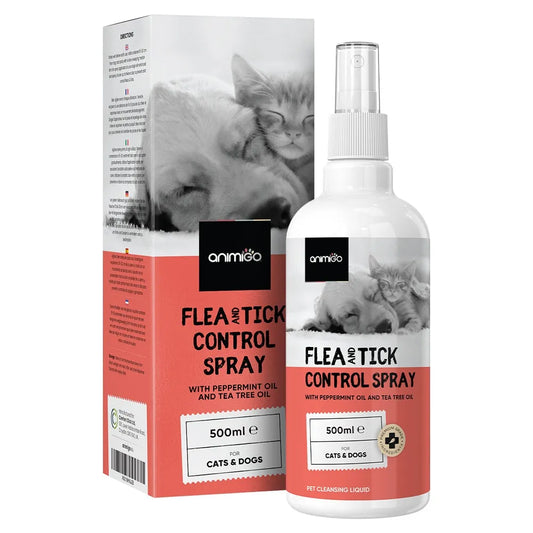Is My Dog Having An Allergic Reaction?
What is a dog allergic reaction? This is a popular question for many dog owners, but why? If you’re one of the many asking this question it is probably because you are either unaware that dogs can have allergies too or you don’t know the signs of a dog with an allergy. If you want some help to understand the most important dog allergy symptoms to look out for as well as how you can help them deal with their allergies, we’re here to help!
What is an allergic reaction?

An allergic reaction, in dogs and humans alike, occurs as a result of the immune system. To us, the allergen is seemingly harmless, such as some pollen or certain foods. To our immune system, however, for some reason, they see it as an invading foreign substance that they need to protect the body against. To do this, it releases histamines and antibodies to go and fight the invading substance that has somehow come into contact with us, either through touching the skin, inhaling or ingesting. These histamines and antibodies can result in the common symptoms of allergies, including itchy and red skin, sneezing, a runny nose as well as swelling while they attempt to fight off the substance.
What are dogs allergic to?
In theory, dogs can be allergic to anything! Just like with human allergies, each dog is unique and can be allergic to different things and show varying symptoms. This can make it almost impossible to prevent all allergies, but if you can identify the specific allergen it can make things a lot easier. In general, dog allergies can be classified into three groups - food, environmental and skin. Whilst these can still vary and the lines can blur, these are a simple way to categorise the type of allergen as well as the typical symptoms.
Food Allergies

Dog food allergies are pretty common, and, as a result, can be relatively easy to identify. The most obvious signs that your dog could have a food allergy is if they vomit, have diarrhoea or if you see swelling around their mouth or muzzle either directly after eating the food or up to 24 hours after. In the cases of a serious food allergy, dogs can even experience anaphylactic shock which results in their airways closing so they can’t breathe. This is more on the rare side, however, and it is more likely that your dog will have an intolerance to certain foods instead of an actual allergy.
Food intolerances (or sensitivities) in dogs are usually a cumulative response instead of one from the immune system and are less of a threat to their health. Instead, they can be more of an inconvenience and make your dog feel bloated and uncomfortable. The best way to differentiate between an intolerance and an allergy is to examine the symptoms. There are also tests available that can identify a food allergy so you can take the action needed.
The most common dog food allergies include proteins (such as beef, chicken and eggs), grains (such as rice, corn and wheat), legumes (such as peanuts, peas and soy) and dairy (such as milk, cheese and yoghurt). Many of these can be found in typical pre-made dog foods, which is why those with allergies often opt for either tailored dog foods or homemade versions.
Environmental Allergies

An environmental allergy means that it can usually be found in the air and causes problems for your pooch when it is inhaled. The most common environmental allergies in dogs include pollen, dust, animal dander and mould. In general, an environmental allergy can be seen as irritants (such as dust) or seasonal (such as pollen). Overall, environmental allergies are a lot harder to avoid than the other two; if it is a food you can avoid it, but it can be nearly impossible for a dog to avoid pollen! As a result, dogs with environmental allergies may require allergy aids throughout the year, instead of just when they come into contact.
Typical signs of an environmental allergy in dogs include sneezing, coughing and itching. If it is a seasonal allergy, you can normally tell if it is okay for certain periods of the year and worse at others (similar to those with hayfever in the spring and summer months). These kinds of allergies can also depend on where you live as a hotter climate will differ from a colder one.
Skin Allergies

Skin allergies in dogs are one of the most common allergies and have the most visible symptoms and signs. This includes itchy skin as well as redness and irritation. Dogs can be allergic to a number of different stimuli that can cause a reaction on their skin, including cleaning supplies, perfumes, plants and even certain grooming products. Dogs can also have an allergic reaction to flea saliva, resulting in itchy, red bumps around the bite.
To make things even more complicated, the signs of a skin allergy in dogs can be related to other sorts of allergies. For example, a dog can be allergic to a certain food, and one of the side effects could be itchy skin. This is why skin allergies can be more difficult to establish and determine the exact cause, as itchy red skin can be a sign of a number of issues!
Dog allergy symptoms
As each dog is different, so is each allergy. As a result, dogs can be allergic to different things and exhibit differing symptoms. For example, two dogs can have the same allergy, but their symptoms can be very different. Despite this, there are some common signs to look out for that are usually a signal of an allergy in your dog. Whilst these can be split into one of the three categories, take note that there may be certain times when they may still overlap.
Food Swelling
Vomiting
Diarrhoea
Hives
Ear infections
Environmental Sneezing
Coughing
Runny nose
Watery eyes
Wheezing
Skin Scratching
Itchy skin
Redness
Irritation
Flaky skin
What can I give my dog for allergies?

When it comes to helping your dog deal with their allergies, be it food, environmental or skin, thankfully there are some great options to choose from. Once you have looked at their symptoms and established that it is an allergic reaction (instead of another health issue) then you can try conducting an allergy test. For food allergens, the main way to test is through an elimination diet. This means giving your dog a different diet and then slowly introducing what you think they may be allergic to and seeing what creates a reaction. For other types of allergies, there are tests that can be done either at home or through your vets.
Once you know that your dog has an allergy and you’ve identified what it is, the most obvious step to make is to avoid the allergen. For some, this can be simple; you can just not give your dog that food anymore. For many others though, such as pollen, they cannot be easily avoided. This is where allergy tablets for dogs come in alongside other allergy aids. There are some dog allergy medications available, such as antihistamines, but these can have other side effects that you don’t want, such as drowsiness.
For this reason, one of the most popular choices is a natural allergy aid. These come in many different shapes and forms depending on the allergy and the symptoms. Firstly, you can get specific products to help with the symptoms. This includes things like dog itching drops, shampoos for sensitive skin and aids for diarrhoea and vomiting. Secondly, you can try natural products designed to help allergies overall. These work by boosting your dog’s immune system and helping their body’s defences to naturally fight against the allergen in order to lessen the symptoms. These natural allergy aids are usually full of amazing nutrients including vitamins, minerals and amino acids to help your dog deal with their allergy.


























